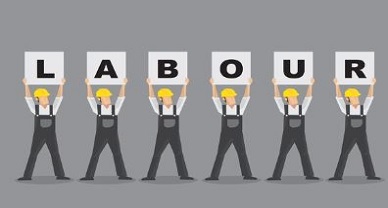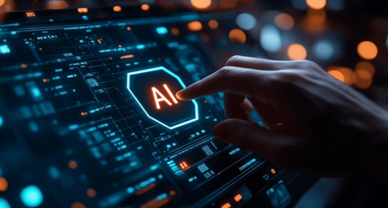Labour unions and its’ role in AI automated workplace
Introduction
Labour unions or the trade unions are the organizations formed by coming together of collective members from different fields and professions advocating for their rights and interests. Such unions represent their members i.e. employees to the employer addressing their respective issues relating to matters of wages, working hours, working conditions and advocating social policies that impact workers. Unions may significantly raise employment standards and job security by uniting workers and using their collective strength to accomplish these goals.
In today’s world labour unions play a crucial role in protecting and sustaining workers and employees in the era of AI and automation where AI has rapidly taking over the jobs and lives of people with ever evolving and advancing innovations. People opt for automation in every walk of life today but when it comes to job and ensuring security of life, AI and automation becomes a threat to us. That is when these unions come in frame to advocate and preserve human authenticity. It talks about the matters like employment being at stake, efficiency and transparency, worker privacy, inclusive technological adoption and collective bargaining in contemporary world.
Employment being taken over by AI
With ever increasing population where Indian population is equal to 17.76% of the global population and India’s mid-year population estimate for 2023 is 1,428,627,663 people[1]. Increasing number of population leads to more number of individuals competing for limited number of jobs leading to crisis i.e., increase in the rate of unemployment. Overpopulation in rural areas often leads to migration of many individuals from rural to urban regions in quest of employment and better opportunity to live a better life increasing urban employment rate creating slum areas with inadequate living conditions. The labour participation rate (LPR) decreased to 40.9% from 41.1%, the employment rate decreased from 38.1% to 37.6%, and India’s unemployment rate increased to 8.1% in April 2024 from 7.4% in March, according to CMIE. Urban unemployment increased from 8.1% to 8.7%, while rural unemployment rose from 7.1% to 7.8%[2]. With such rapid increase in unemployment rate in both rural and urban sector introduction of automation will only help in increasing unemployment by taking over of jobs from humans to machines.

AI is believed to be more efficient in completing task and accuracy than most humans as humans develop skills gradually and slowly, while the AI is a set of programs put together and already pre prepared to function as required. Jobs like salespeople, warehouse labour, research and analysis, customer service encounters, bookkeepers and accountants, and receptionists, etc., are being taken over by AI and automation, such jobs does not require highly educated professionals like surgeons and judges and therefore consists of more number of workers with minimal education. And if AI takes over most of the above mentioned jobs, most of the employees shall remain unemployed.
Now labour unions can help bring reforms in the employment procedure of such jobs by demanding equal machine and human co working environment by not allowing AI to totally take over such job post.
Worker privacy
In the last few decades, artificial intelligence (AI) has progressively permeated our professional as well as personal lives, improving our social media feeds, operating our devices invisibly, and altering how marketers interact with customers through improved analytics[3]. Employees’ activities such as communication and productivity being tracked by AI powered surveillance tools can make the employees feel continuously watched thus creating a pressured and more stressed work environment. It can hamper the relation between the employee and employer. Employers may use AI to gather personal information about the employees, data might include performance metrics, health information, biometric data, and even social media activity. While it can be used for better work quality purpose and analysis but misuse of such personal information can happen against the employees. Employees who have their sensitive information compromised may face serious repercussions, such as identity theft.
AI can predict employee behavior such as likelihood of quitting by the collected data and activity. If the AI already predicts when the employee would leave the company it can prevent the employee from gaining more opportunities and training as the employer would already plan on replacing the existing employee on the basis of AI collected data. This can undermine fairness and equity in workplace, leading to resentment and disappointment of employees.
Wage suppression
According to a recent Goldman Sachs analysis, Around the world, generative AI might impact 300 million employment, or 18% of all jobs. More developed economies than new ones would be impacted[4]. Workers affected by AI displaced jobs are forced to take up lower- paying or part-time jobs if they cannot find a permanent job aligning with their original field leading to wage suppression. In the era of technology, workers are required to have advanced technical skills which the underprivileged section of a developing country lack therefore fail to secure a permanent job. The cost and training for such skills are time consuming thus leading the workers to settle for lesser paying jobs just to remain employed, indirectly contributing towards wage suppression. If the AI takes over most jobs, the bargaining power of the job seekers decreases as the employers can choose AI over human for lower cost of work with higher rate of accuracy, so the employers also feel less pressured to offer better wages for the employees.
Labour unions might get weakened with less demand for human labours, which advocate for better working conditions and wages. Unions may have lesser influence with fewer labours to represent leading to stagnation or declining of wages. For the economic benefits of AI to be evenly distributed and for workers who are displaced by automation to be supported, policymakers, businesses, and labour unions must work together.
Inclusive technological adoption
Making sure that the benefits of automation and artificial intelligence (AI) are maximized is crucial as AI becomes increasingly common, widely shared throughout society and that any possible drawbacks are minimized. As AI taking over in the workplace, reskilling and up-skilling of opportunities should be provided for workers displaced by AI, selecting sectors and occupations where automation is less likely to occur. Inclusion in the tech industry, making sure that benefit from the AI revolution reaches people of every background. In AI-related education and employment programs should be created that specifically focuses on inclusion of underrepresented group such as women, minorities and people with disabilities. Learning of basic machine knowledge can help people to get a grip on what is going on in the age of technology and AI. And help them use AI and automation instead of letting AI take over their jobs making them a part of highly populated unemployed group. Labour unions have the ability to make certain that AI and automation are implemented in a way that is equitable, inclusive, and advantageous to workers by using their collective power. Labour unions may help design a future where technology improves rather than replaces human labour through advocacy, education, collaboration, and ethical oversight.
Collective bargaining in contemporary times
Collective bargaining in contemporary times, to address new challenges and opportunities where AI and automation are transforming workplaces, requires adapting traditional strategies. Negotiating job security by including specific clauses in collective bargaining agreements (CBAs) that prevents jobs from being entirely replaced by AI and automation. The labour contract that unites a union representing employees and the employer, or management. The employment contract’s terms and conditions, such as pay, working hours and conditions, benefits for employees, grievance and arbitration procedures, no-walk periods, and management and union rights and obligations, are outlined in a collective bargaining agreement (CBA)[5]. Negotiations for all-inclusive transition assistance, which would include severance pay, longer notice terms, and career guidance for laid off employees. Ensuring that companies instead of choosing to lay off employees prefer to reassign them to new positions generated by automation and AI. Negotiate for regular wage increase based on the quality of work to protect against wage suppression.
Encouraging the implementation of improved social safety nets to protect workers impacted by technology advancements, such as comprehensive unemployment insurance, universal healthcare, and pension plans. In the context of automation and artificial intelligence (AI), push for national and international regulatory frameworks that safeguard workers’ rights.
Conclusion
In today’s fast evolving workplace, where technology and artificial intelligence are progressively replacing human labour, labour unions are indispensable. These labour unions promote higher pay, benefits, and job security by bringing workers together. AI’s effectiveness poses a serious threat to job availability given India’s high unemployment rates, especially for positions that don’t demand highly specialized skills.
Through ongoing data gathering and monitoring, AI can potentially violate worker privacy, which can result in unfair management practices and stress. Another issue is the potential for AI to decrease wages by lowering the need for human labor and eroding the negotiating power of employees and labor unions.
Labour unions need to modify their tactics to respond to these issues. Ensuring equitable AI implementation, campaigning for up-skilling and reskilling programs, negotiating employment protection provisions, and encouraging inclusive technological adoption are all examples of this. By doing this, unions may contribute to the development of a future in which artificial intelligence (AI) strengthens rather than replaces human labour, guaranteeing that the advantages of AI are distributed fairly and upholding workers’ rights.
Author:–Bellona Brahma, in case of any queries please contact/write back to us at support@ipandlegalfilings.com or IP & Legal Filing.
REFERENCES
- India Population (2024) – Worldometer. (n.d.). Retrieved from https://www.worldometers.info/world-population/india-population/
- (n.d.). Retrieved from https://www.cmie.com/kommon/bin/sr.php?kall=warticle&dt=20240502160006&msec=476
- What Are the Dangers of AI? How AI is Affecting the Job Market and More. (2024, July 22). Retrieved from https://www.mindandmetrics.com/blog/dangers-of-ai-how-ai-is-affecting-the-job-market-and-more#:~:text=Reasons%20cited%20by%20AI%20developers,rapid%2C%20malicious%20spread%20of%20misinformation.
- Johnson, A. (2023, March 31). Which Jobs Will AI Replace? These 4 Industries Will Be Heavily Impacted. Forbes. Retrieved from https://www.forbes.com
- Collective Bargaining Agreement | Practical Law. (n.d.). Retrieved from https://uk.practicallaw.thomsonreuters.com/4-504-1300?transitionType=Default&contextData=(sc.Default)&firstPage=true
[1] India Population (2024) – Worldometer. (n.d.). Retrieved from https://www.worldometers.info/world-population/india-population/
[2] CMIE. (n.d.). Retrieved from https://www.cmie.com/kommon/bin/sr.php?kall=warticle&dt=20240502160006&msec=476
[3] What Are the Dangers of AI? How AI is Affecting the Job Market and More. (2024, July 22). Retrieved from https://www.mindandmetrics.com/blog/dangers-of-ai-how-ai-is-affecting-the-job-market-and-more#:~:text=Reasons%20cited%20by%20AI%20developers,rapid%2C%20malicious%20spread%20of%20misinformation.
[4] Johnson, A. (2023, March 31). Which Jobs Will AI Replace? These 4 Industries Will Be Heavily Impacted. Forbes. Retrieved from https://www.forbes.com
[5] Collective Bargaining Agreement | Practical Law. (n.d.). Retrieved from https://uk.practicallaw.thomsonreuters.com/4-504-1300?transitionType=Default&contextData=(sc.Default)&firstPage=true


